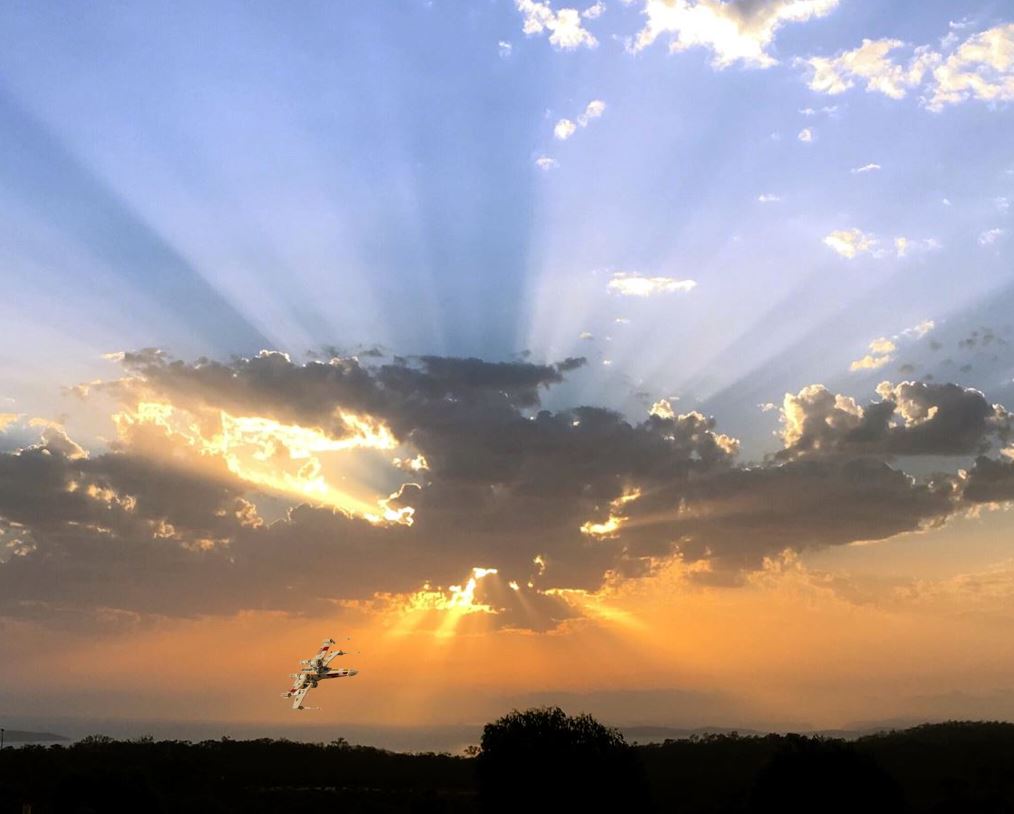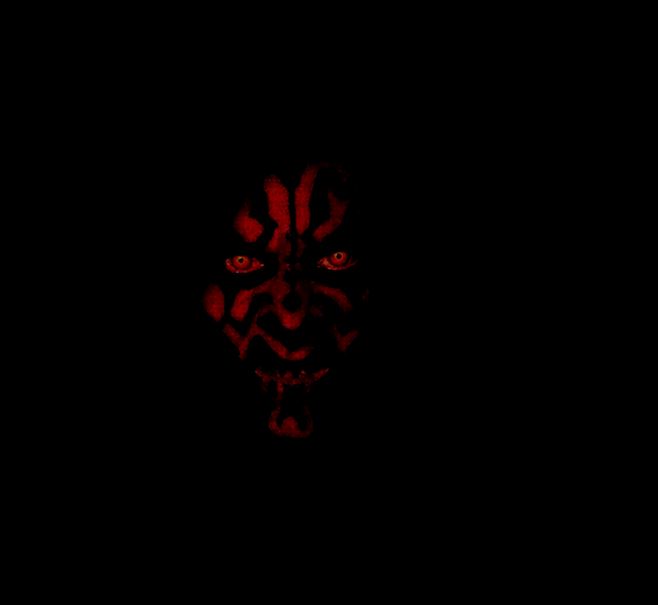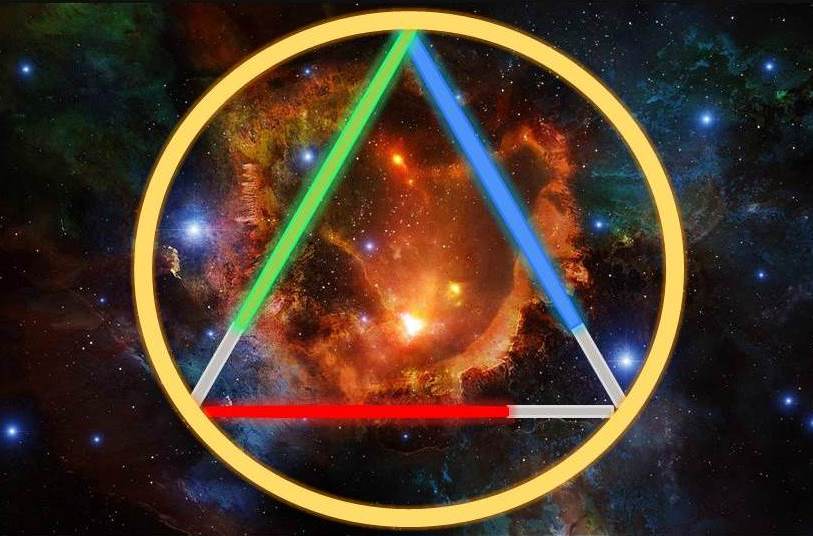
Jedi believe in practicing awareness and are mindful of their thoughts. Jedi keep their thoughts positive. A positive mental attitude is healthy for both the mind and body. Not every thought that ‘pops’ into our head is actually ours, since thoughts can originate from many sources across the Universe, and not just from our physical brain. We have to be able to discern the thoughts and remove the bad ones or negative, fear-based ones. Even the food we eat, and things we drink can influence our thoughts. So, we must always be mindful of our thoughts.
Jedi Optimism
In the Clone Wars episode “The Blue Shadow Virus” Anakin is becoming agitated as it becomes clear that Padme and the entire planet of Naboo may be in grave danger from a biological weapon unleashed by the Separatists. Obi-wan Kenobi watching Anakin tie himself in to knots of anxiety wryly points out that Anakin seems a little “on edge”.
“There’s a good chance we’re about to destroy all life on this planet including ours and the senator so yes I’m a little on edge, why aren’t you?” replies Anakin with exasperation.
Obi-wan Kenobi shrugs nonchalantly, “I’m better at hiding it”.
Obi-wan always reserved optimism. Even when faced with a hopeless situation he never gave up hope and it showed in his attitude. Obi-wan was realistic but never defeatist. Anakin on the other hand could be positive but was easily drawn in to a negative outlook at the expense of reality.
Jedi Pessimism
In the Clone Wars The Jedi Master Pong Krell switched sides. Arriving on Umbara during an assault to take the capital, Krell relieves Anakin who has been ordered back to Coruscant. Krell takes command of a battalion of the 501st and begins to undermine the mission. The Clone troopers under his charge eventually discovered the deception and mutinied. They manage to restrain the Master Jedi after many Troopers are killed in the attempt to capture the traitor.
When asked “why” the Jedi Master revealed that the Republic’s efforts are futile and he was going to save his skin and become Count Dooku’s apprentice. Pong Krell had lost confidence in the Republic and his pessimism at their chances forced him to abandon the Jedi Code and sway to the Dark Side. This is the nature of chronic pessimism.
The Power of Positive Thought
Over sixty years ago the “Power of Positive Thinking” became an international best seller. The premise of the book was that each and every person has the ability to completely transform their lives simply through the power of positive thought. This was hardly a new concept. The philosophy had been around for thousands of years. The Buddha revealed to his followers this profound fact over 2500 years ago. The ancient Greeks and Romans were tossing it about between the different philosophies of the day even before Socrates spoke about it. The early Christians preached of the power of the mind to transform one’s life through simple belief and Faith. The idea of miracles is largely one of the power of the mind over the body. If we truly believe we can be healed, so we shall.
Speak to any Doctor and you will be told that diagnostic medicine works most of the time. That most of the time is due largely to clinical trials undertaken to prove drugs and treatments. Some diseases like cancer provide Oncologists with a challenge in that science has not quite nailed a cure. A person identified with Stage IV lung cancer is likely to have a low rate of survivability even with treatment particularly if the tumor is aggressive. Doctors are now finding that patients who have grit, determination or abiding faith can at times turn these odds around and “demonstrate modern day miracles”.
Doctors will also tell you that treatment of any disease and the healing process is a team effort. The conscious patient is not just a passive subject but an active participant in their treatment and recovery. The Patient is expected to be compliant with the treatment plan. If a course of drugs is not taken as ordered or instructions are not followed then the Doctor cannot be held accountable for lack of progress. The Patient must also bring a willing and positive attitude to the table if they are to stand a chance of full recovery.
“In a dark place we find ourselves and a little more knowledge lights our way” – Yoda
Think and Heal
Very often we hear stories of people who have been given a hopeless prognosis. Some are given months or a few years to live. Yet their sheer will to live and their “can do”, “never say die” attitude not only keeps them alive but in some cases leads to complete recovery. Ask any but the most closed minded Doctors and they will tell you that a patient’s positive attitude is a crucial element in the successful outcome of a case. Some people think themselves into illness. Some patients think themselves worse and sabotage their recovery. Recovery is a mental as well as a physiological process.
The Canadian Medical Association Journal published a study that backs the “mind-body connection” with hard science1.. Optimistic and confident patients who went in to surgery fared better than those who went in fearful or pessimistic about their chances. Post-operative pain was also lower in patients who were positive and more proactive in their recovery. In another study optimism and a positive outlook was also correlated with long term health and quality of life2.
The “woe is me” cohort were found to have more dependency on treatment and pain therapy and lower success rates to full recovery. In the past Doctors would refer anything they could not touch, hear or feel and measure to the “Psych” department. Increasingly Doctors are talking to their Patients about the importance of having a positive attitude. Meditation and relaxation exercises are encouraged along with affirmations and visualization.
“In order to carry a positive action we must develop a positive vision” – Dalai Lama
The Operation
Some years ago I had a large non-malignant tumor removed from my head. The mass if it had been allowed to continue growing would have have been fatal. The Doctors were honest about the surgery and the potential outcomes. I was going to lose most of my hearing. There would be disfigurement and facial palsy. My eye sight would like be badly affected as well as balance. It would be months before I would be fit to return to work and I’d probably never have the same quality of life again. There would be chronic pain. The upside is I’d get to live for a few more decades.
The operation went ahead. I walked out of hospital and was back at work four weeks later. Within a few months I was back to full fitness. The palsy and eye issues were there but I was alive. The Doctors were surprised by the progress and stated that it was my drive and determination to get better that accelerated the healing. A positive attitude on my part had made their job a lot easier. They did the medicine, I did positive attitude. I got better and went back to work.
“If you change your mind your conditions must change too. We are transformed by the renewing of our minds.” – Emmet Fox
Stinking Thinking
While this disease had been easy to lick my problem with the other disease, alcoholism, was not so simple. Alcoholics have a way of self inoculating themselves against a mental attitude adverse to drinking. Where alcohol is concerned we become completely irrational and unreasonable. Our mind is hijacked by a deeper need than self preservation.We sabotage ourselves mentally.
Several months after my life saving operation I was wondering what was the point of being granted a second chance. I was frustrated with the pain and discomfort. My eyes watered or were too dry, I had headaches all the time and I was conscious of the palsy. Alcohol became a release. I had stinking thinking.
As the depression set in so did the anxiety and the resentment. Fear leads to anger leads to the dark side. I was losing my mind and as I spiraled downward there seemed to be little hope. Would it have not been better if that tumor had killed me rather than let me live through this suffering? I seemed to be sinking in to some kind of deep hole and into a morass of self pity, despair, anger, sadness and lingering insanity. I could not muster the bravado which had helped me recover after surgery. Why was that?
Waking Up
It was a simple and feeble call for help. A flimsy reed was offered and I was raised up out of that pit. I can remember the experience but it is hard to describe. My call for help was a surrender, a submission to some power. Something washed over me and I felt like a light flared within. The sensation was overwhelming. I knew at once everything would be alright. There was no need to worry ever again. My compulsion to drink was gone and it has never returned.
For a few weeks after I rode a wave of spiritual and emotional high. I embraced the ethos of recovery and set out to better myself. In the span of two months I worked through Steps 1 to 9. Such was my attitude that I was able to achieve all the goals I set myself. A positive attitude was paramount in early recovery. Since then I have discovered that attitude is a choice. We can choose to adopt a negative attitude or a positive attitude to almost any situation. It’s what we make it.
“Perpetual optimism is a force multiplier” – Colin Powell
Get Positive
Having a positive attitude does not mean we dance as Rome burns down. It means taking a realistic view of life by taking control where we can and accepting that some things are out of our control. Even in the face of a unwanted events we can still be cautiously optimistic. To fall in to despair or a cycle of negative self talk solves nothing, it makes it worse.
Things will happen in life which broadside us in completely unexpected ways. We received bad news and we ask how can anyone be positive. I recently learned that someone close to me has lung cancer. The person is very ill but not terminal and is fighting the disease. I try to present a positive attitude every time I see him. It is largely up to him to decide whether to be pessimistic or optimistic about his chances.
When others are down we can help them raise their spirits. No one need carry the load themselves. We cannot take the cancer or the disease and carry it for them because we are stronger but we can help carry them through the rough times. As Samwise Gamgee said to Frodo on the slopes of Mount Doom as the Ring Bearer lay on the rocks unable to go any further “Come on Mr Frodo, I can’t carry the ring for you…..but I can carry you and it as well. So up you get!”.
Be mindful of your attitude. The frame of mind that you take in to almost any situation will affect the outcome. A positive attitude can achieve almost anything, even miracles.
“Men are disturbed not by things but by the views which they take of them” – Epictetus
1.http://www.webmd.com/balance/news/20010727/power-of-positive-thinking
2. http://www.cmaj.ca/content/186/4/E150






